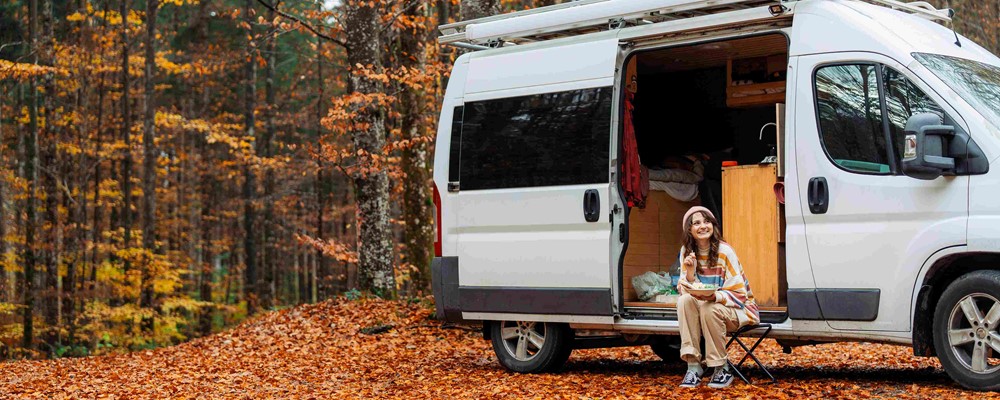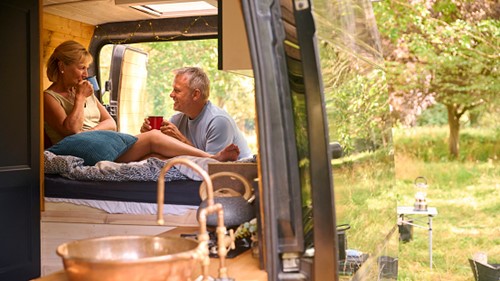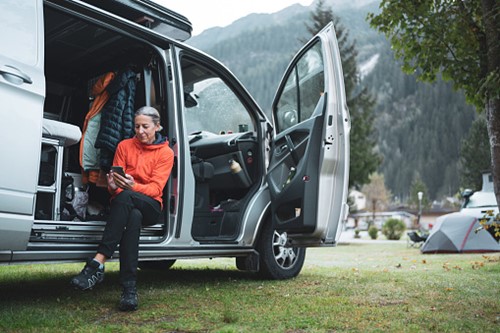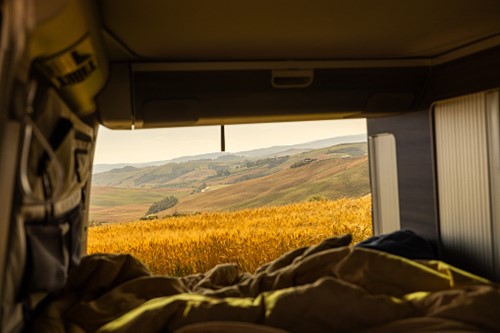Problems changing a van to a motorhome with the DVLA: What you need to know


If you plan to convert your van to a motorhome with the DVLA, there are several benefits. However, there are some common problems that many conversion reclassification applications encounter.
In this guide, we share some of the reasons why you might want to convert your van to a motorhome with the DVLA, discuss the DVLA’s conversion checklist (V1006), and explain how to meet their requirements. We’ll also highlight some common issues that arise when applying for reclassification.
The benefits of reclassifying your van to a motorhome

Deciding not to reclassify your van as a motorhome with the DVLA following a conversion doesn’t make using your vehicle as a motorhome illegal. But there are many benefits to completing this process:
- Insurance: You may be offered lower insurance premiums for a motorhome.
- MOT class: Lighter vehicles classed as motorhomes often come under a Class IV MOT, which is cheaper and has fewer restrictions than a heavier van or commercial vehicle.
- Speed limits: Some speed limits differ for motorhomes and vans in specific weight brackets.
- Ferries, toll roads, and parking: Being classed as a motorhome can sometimes get you better ferry, road toll, and parking rates or access compared to commercial vans.
- Resale: Buyers may be more trusting if the vehicle you’re selling is officially classified as a motorhome.
The DVLA’s policy and the V1006 checklist
The DVLA publishes official guidance under Converting a vehicle into a motor caravan (motor home), which includes everything you need to know about reclassifying your vehicle.
As part of your application, you’ll need to complete the Motor Caravan Conversion Checklist (form V1006), which confirms that your motorhome meets the necessary requirements. You’ll need to meet three conditions before the DVLA will consider reclassifying your vehicle as a motorhome:
- The existing body type on your V5C must appear on their specified list
- The vehicle must have certain permanent external features typical of a motorhome
- The vehicle must meet a set of fixed internal living feature requirements
Meeting reclassification requirements

Each of these three conditions comes with a range of expectations that can be vague and confusing. In fact, one of the most common problems when converting a van to a motorhome with the DVLA is that applications are often rejected, despite owners believing their vehicle meets all the requirements.
Here’s what you need to do to give your reclassification application the best chance of being accepted:
1. The original body type eligibility
On your V5C, your current body type must be one of the following:
- Ambulance
- Box van
- Goods
- Insulated van
- Light goods
- Light van
- Livestock carrier
- Luton van
- Minibus
- MPV (multi-purpose vehicle)
- Panel van
- Specially fitted van
- Special mobile unit
- Van with side windows
If your vehicle has a body type that’s not on this list, the DVLA will refuse to process your application.
2. Permanent external features
These are the permanent external features the DVLA require your vehicle to have:
- Two or more windows on at least one side of the main body to provide a reasonable amount of daylight into the living accommodation. This doesn’t include windows on the driver or passenger doors
- A separate door providing access to the living area. This excludes the driver and passenger doors
- Motorhome-style graphics on both sides of the vehicle
- An awning bar attached to either side of the vehicle
- A high-top roof, excluding pop-top elevating roofs
You’ll need to provide photographic evidence of these external features, with the registration plates visible, plus a photo of the VIN, with your application. On the back of each photo, write a description of the requirement the picture shows, the date, and the vehicle's registration number.
A common and frustrating problem with this part of the reclassification process is that the DVLA can reject your application, stating that your vehicle doesn’t appear to be a motorhome in their opinion.
3. Internal features
These are the features your conversion must include to qualify as a motorhome. They must be permanently fixed.
Seats and table
- The seats and table must be integral to the living area
- The table mounting must be secured permanently
- The seats must be permanently secured and usable at the table
Sleeping accommodation
- Must be integral to the living area
- Must be secured permanently to the floor or a sidewall unless the bed is over the cab
Cooking facilities
- A single-ring hob or microwave fixed to the floor or a sidewall
- Where applicable, the gas reservoir must be secured in a cupboard or attached rigidly
- Where applicable, the gas pipe must be secured to the vehicle structure
Storage facilities
- Must be part of the living accommodation
- Must be permanently secured to the floor or a sidewall unless it’s over the cab
When you submit your application, include photos showing the furniture in place – for example, the bed made, and the table set. You should also include a list of parts used, a letter explaining your conversion, and any receipts or documentation you have.
Common problems when changing a van to a motorhome with the DVLA

The DVLA’s decisions can be subjective, which means that even the most perfect applicants may be refused. Some common issues to look out for include:
- Pop-top roofs aren’t counted as high-tops by the DVLA
- The DVLA may be of the opinion that your vehicle doesn’t look like a motorhome
- Photos are often said to be too vague, so ensure you include detailed descriptions
- Submit receipts, part numbers, and anything else you can think of to ensure your application is complete
- Responses from the DVLA can take weeks, and lengthy correspondence is often required
If your first application is refused, you can appeal or provide further evidence. Be polite, clear, and precise with your communications to give yourself the best chance of a successful outcome. Remember, even if the DVLA doesn’t agree to reclassify your vehicle, your van can still be used as a motorhome.
Specialist motorhome and campervan insurance through Ripe
Whether your van has been reclassified as a motorhome by the DVLA or not, you can still purchase specialist motorhome insurance through Ripe. Enjoy peace of mind while out on the road knowing that your vehicle is fully covered.
Get an instant online quote today.
Please note the information provided on this page should not be taken as advice and has been written as a matter of opinion. For more on insurance cover and policy wording, see our homepage.
Please enter a valid email address.
Please Please tick one of the boxes below.
The latest news – direct to your inbox.
Subscribe for all the latest news, tips and offers from the Ripe Group. You can unsubscribe at any time. For information on how we use your data, please see our Privacy policy.
Thank you for subscribing, you’ll be hearing from us soon!


